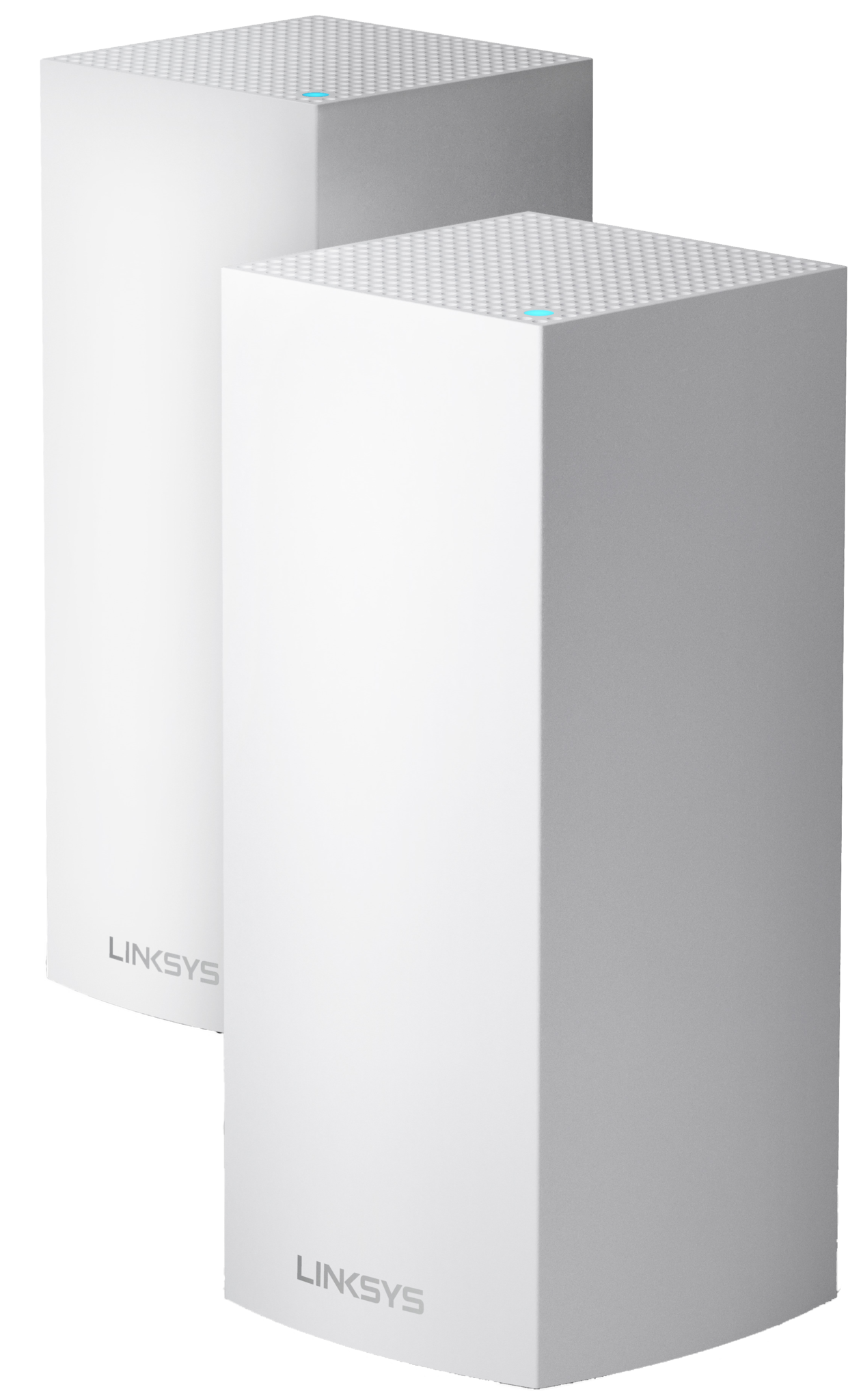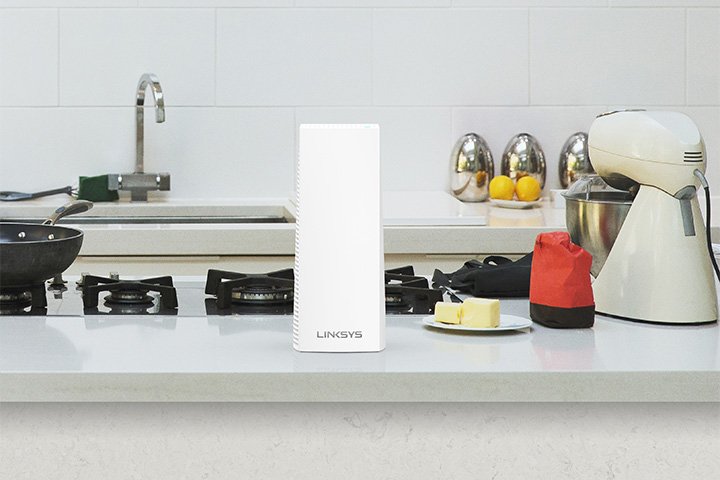Eero Pro 6 vs. Linksys MX10 Velop: Which should you buy?

More for less
Eero Pro 6
Pros
- Tri-band AX4200 speed is plenty for gigabit
- Three nodes allow for easier positioning
- Smaller size
- Great setup app
- Works with all other Eeros
Cons
- Still fairly expensive
Eero Pro 6 is a fast mesh system with support for internet connections up to 1Gbps. Three routers can cover up to 6,000 square feet, and a tri-band AX4200 Wi-Fi 6 connection keeps speeds high throughout your home. You can even add additional coverage with any other Eero router or extender.
One of the fastest
Linksys MX10 Velop
Pros
- Fast tri-band AX5300 speed is plenty for gigabit
- Only two nodes needed for similar coverage
- Four Ethernet ports per node
- Works with all other Velop nodes
Cons
- Large node size
- Very expensive
The Velop MX10 from Linksys is a seriously fast Wi-Fi system with AX5300 Wi-Fi 6 speeds with a tri-band connection to keep mesh performance high. Velop meshes can even be extended with all other Velop routers, including older systems. Four Ethernet ports on each node make MX10 great for home offices.
Eero continues to make one of the most compelling mesh systems, even if its top speeds aren't quite as high. With three small routers and enough speed for gigabit internet connections, the Eero Pro 6 mesh system is a great fit for many people looking for a high-performance mesh system. The Linksys MX10 Velop offers the same coverage as the Eero mesh system with only two routers. The MX10 system also has four open Ethernet ports on each router, allowing for plenty of wired connectivity. There's a reason it's one of the best Wi-Fi 6 mesh routers you can get. Overall, the Eero Pro 6 system is a more compelling Wi-Fi solution thanks to its more than adequate speed and lower price.
Eero Pro 6 vs. Linksys MX10 Velop How much speed do you need?
The Linksys MX10 Velop is a fast mesh system. An AX5300 tri-band Wi-Fi 6 connection is more than capable of keeping up with a gigabit connection even with many devices connected. The speed breaks down into two 5GHz bands, one capable of up to 1733Mbps and 2404Mbps on the other, plus a 2.4GHz band with a massive 1147Mbps. With one of the 5GHz bands dedicated to the mesh connection and one left for devices, there's more than enough speed for just about anything you can do on your home network.
Eero Pro 6 isn't quite as fast, but with a tri-band AX4200 connection but with 1201Mbps and 2402Mbps on the two 5Ghz bands and 574Mbps on the 2.4GHz band, it isn't exactly slow. Eero recommends this setup for internet connections up to 1Gbps. For most people, either setup will provide plenty of speed.
| Eero Pro 6 | Linksys MX10 Velop | |
|---|---|---|
| Wireless standard | Wi-Fi 6 | Wi-Fi 6 |
| Wi-Fi speed | AX4200 5GHz at 1201Mbps + 5GHz at 2402Mbps + 2.4GHz at 574Mbps |
AX5300 5GHz at 1733Mbps + 5GHz at 2402Mbps + 2.4GHz at 1147Mbps |
| Streams | 8 | 12 |
| Approximate coverage | 6,000 sq ft | 6,000 sq ft |
| Ethernet ports | 2 per node (one for uplink) | 4 per node |
| Dimensions | 5.3 x 5.3 x 2.1 inch | 4.5 x 4.5 x 9.6 inch |
One thing to keep in mind with the Velop system is just how much larger it is than the Eero Pro 6. At 9.6 inches tall, it will be quite a bit harder to place effectively. Its larger size allows for greater coverage per node with four Ethernet ports compared to the Eero Pro 6's two Ethernet ports.
Eero Pro 6 vs. Linksys MX10 Velop Coverage and expansion
Linksys includes two MX5 routers with the MX10 set, each capable of covering 3,000 square feet. For many people, one is enough. Still, if you have a home with a lot of interference or need to cover a very larger home, the MX10 is a great choice with up to 6,000 square feet of coverage. Linksys has also made sure that all Velop routers will work with each other. If you need more coverage in your Velop mesh but don't need as much speed, you can save some money by using a cheaper Velop.
Eero Pro 6 with three routers offers similar coverage to the MX10 thanks to 2,000 square feet of coverage from each one. Splitting the system into three routers can help keep speeds higher if your house has a long layout or a lot of interference. The smaller size of the Eero also makes it easier to put each router at an optimal height and location. All Eeros work with each other, so if you don't need as much speed in one area of your house, you can add in a cheaper Eero 6 or even an older Eero.
Both systems can be set up with an app. You'll also use the app to add any additional nodes in the future. You use the app to manage connected devices and change the Wi-Fi settings.
Eero Pro 6 vs. Linksys MX10 Velop Software extras
Eero's software solutions help it stand apart. Eero has two optional security subscriptions called Eero Secure and Eero Secure+. The former includes security scans of incoming connections, ad blocking, and content filtering for inappropriate content. This comes in at $2.99 per month. If you're willing to spend $9.99 per month, you get a password manager, a VPN subscription, and Malwarebyte antivirus software.
Both devices can be controlled by Alexa, making it easy to enable and disable connections. This is great for enabling guest access without having to open the app. You also get support for WPA 3 security on both systems. Both systems will automatically download software updates to keep each node up to date, keeping your network secure.
Eero Pro 6 vs. Linksys MX10 Velop Which one fits your home?
Either system is more than capable of supporting a gigabit connection in a substantial home. The Linksys MX10 Velop is a great choice and will have no trouble keeping up with heavy users for years to come. Overall, the Eero Pro 6 feels like a better value for most people, thanks to providing similar coverage for a lower cost. Not only that, but the smaller Eero Pro 6 routers will be easier to place and will take up much less room in your home.
More for less
Eero Pro 6
Three nodes with gigabit speeds
Cover up to 6,000 sq ft with a gigabit internet connection Eero Pro 6 thanks to a tri-band AX4200 Wi-Fi 6 wireless setup.
One of the fastest
Linksys MX10 Velop
Super-fast AX5300 speeds and plenty of Ethernet
Linksys manages to cover up to 6,000 sq ft with two nodes in the MX10 Velop. AX5300 speeds can keep up with a gigabit connection with ease.




No comments